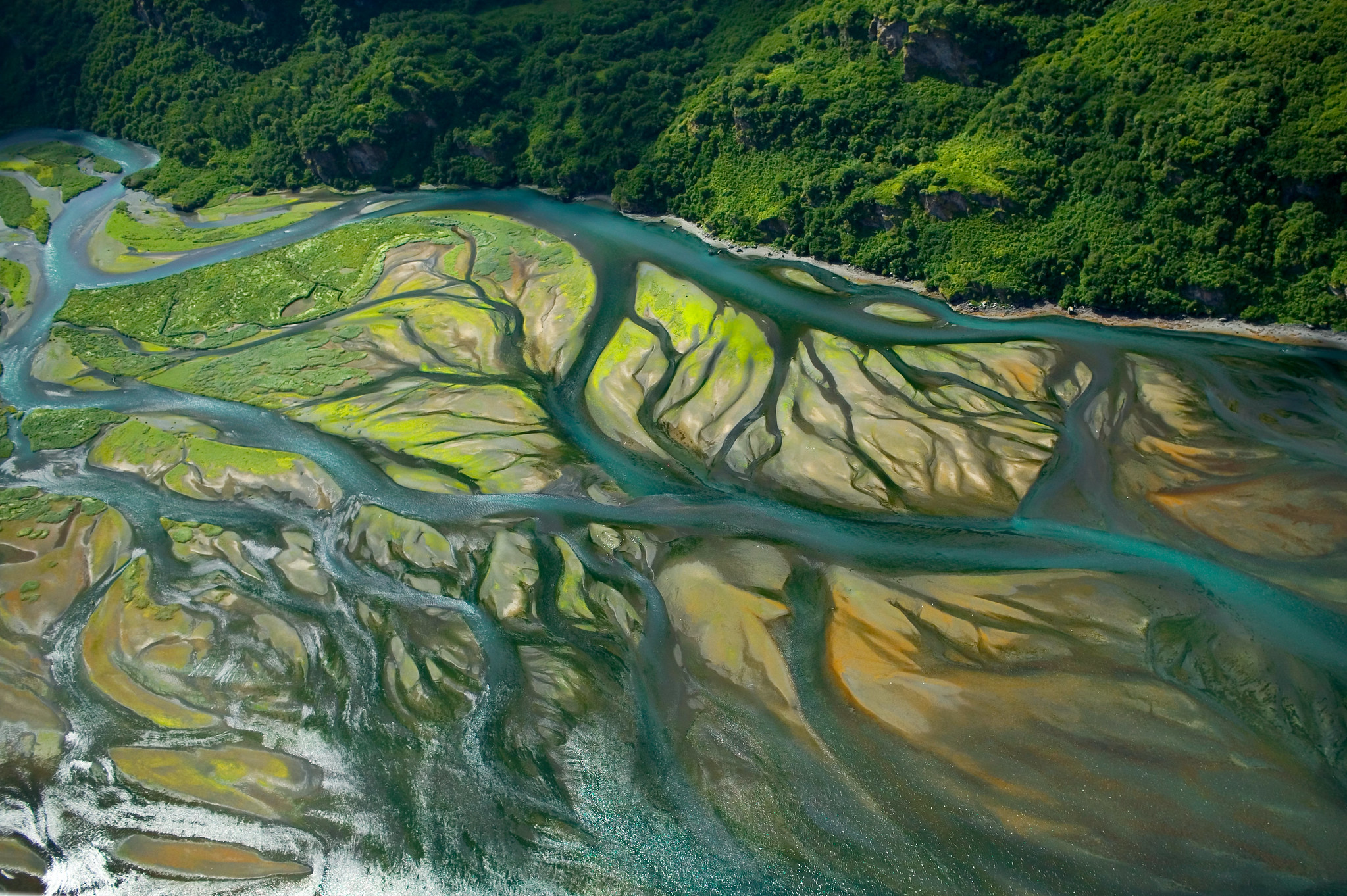Water
 If the continental United States represented the entire surface of the earth, water would cover as much as every state west of the Mississippi River, with enough left over to cover the state of New York. Of the total volume of water on earth, about 97% is saltwater, and only about 3% is fresh. 98% of the freshwater is locked away in groundwater, ice caps, and glaciers, meaning only 2% of the world’s freshwater is available for human use. That’s about 148 gallons per person on Earth. In comparison, a 10-minute shower can take between 20 and 50 gallons of water.
If the continental United States represented the entire surface of the earth, water would cover as much as every state west of the Mississippi River, with enough left over to cover the state of New York. Of the total volume of water on earth, about 97% is saltwater, and only about 3% is fresh. 98% of the freshwater is locked away in groundwater, ice caps, and glaciers, meaning only 2% of the world’s freshwater is available for human use. That’s about 148 gallons per person on Earth. In comparison, a 10-minute shower can take between 20 and 50 gallons of water.
The Earth typically does not gain or lose water in substantial amounts, so the water you use likely existed, in some form, before the first living creature evolved. While the amount of water on the planet does not change significantly, the amount of water in parts of Earth’s system can fluctuate wildly. In addition, water is not distributed evenly across the land surface. The result is that some areas are climatically wetter or drier than others, which shapes local agriculture and restricts which crops and livestock can prosper in a given region.
In the United States, some areas are expected to become drier as the climate, including average temperature and average precipitation, changes. Conversely, other areas are predicted to become wetter. The frequency of extreme weather events--severe floods, persistent drought, and severe storms--is also expected to change in some regions. The effect of climate change on water availability and wet and dry seasons has numerous potential implications for agriculture, especially in areas where the climate is expected to become less suitable to sustained agricultural production.
-
Storms and Stream Crossings
Stream-crossings have a lower risk of failure if designed appropriately for the stream, and with consideration of…
-
Shifts in Growing Degree Days, Plant Hardiness Zones and Heat Zones
Climate change is already having substantial effects on natural systems and the benefits they provide. Forest…
-
Tribal Climate Adaptation Menu
The Menu is an extensive collection of climate change adaptation actions for natural resource management with tribal…
-
Re-carbonizing Row Crop Farms
Natural Resources Specialist, Justin Mount, is improving producers’ understanding of crop system planning tools,…
-
Assessment of Climate Change Vulnerability and Adaptation and Mitigation Strategies
A report describing the potential vulnerability of crops, forests and animal agriculture to climate-driven…
-
Lessons learned from Urban Forestry Vulnerability Assessment: Chicago
This document describes a framework developed and piloted in the Chicago region to assess the vulnerability of urban…
-
Continued Conversations with Cecarelli Farms
William DellaCamera faces new responsibilities and decisions for Cecarelli Farms.
-
UVM Dairy Farming Research
Research at dairy farms in Vermont shows how management practices can affect water quality, economics, and greenhouse…
-
The Effects of Drought on Recreation and Wilderness
Drought conditions present challenges for managing recreation opportunities on national forests and grasslands by…









